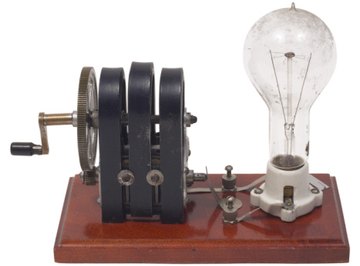
An armature is the rotating solenoid inside of DC machines. Engineers use DC machines to build a generator or a motor. When it's used as a generator, a gas turbine or a diesel engine rotates the armature and the armature generates electric power. When it's used as a motor, electric power rotates the armature and the armature generates the mechanical energy needed to operate a motor. In both cases, the armature rotates in a magnetic field to produce the required output.
Find the total number of conductors on the armature, or "Z." Refer to the armature design specifications.
Find the speed of rotation of the armature, or "N," in revolutions per minute or rpms. Refer to the armature design specifications.
Find the magnetic flux per pole on the armature, or "M," in units of Webers. Refer to the armature design specifications.
Calculate the induced armature voltage using the formula Eo = (Z N M)/ 60 where Eo is the induced armature voltage. For example, if Z is 360 conductors, N is 1200 rpm and M is 0.04 Wb, then [(360)(1200)(0.04)]/60 equals 288 volts.
About the Author
Dwight Chestnut has been a freelance business researcher and article writer for over 18 years. He has published several business articles online and written several business ebooks. Chestnut holds a bachelor's degree in electrical engineering from the University of Mississippi (1980) and a Master of Business Administration from University of Phoenix (2004).
Photo Credits
Hemera Technologies/PhotoObjects.net/Getty Images
